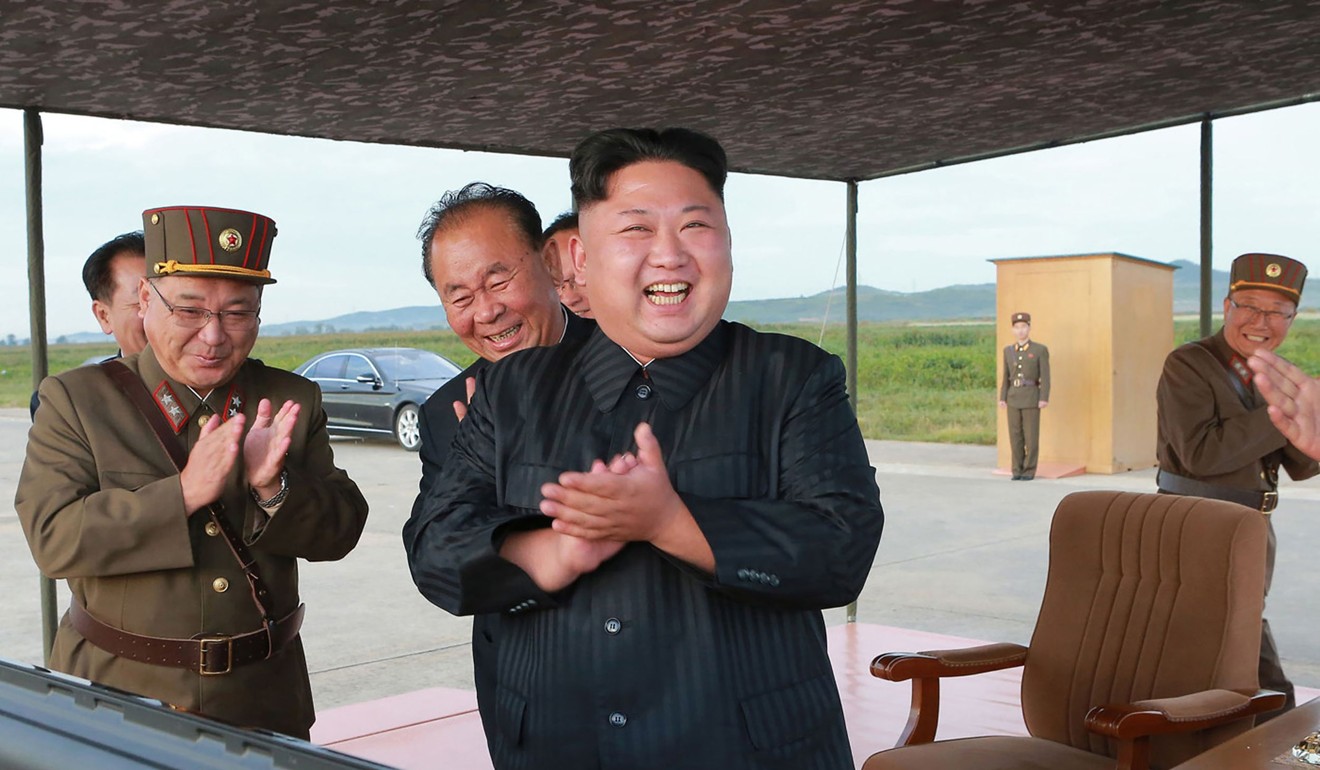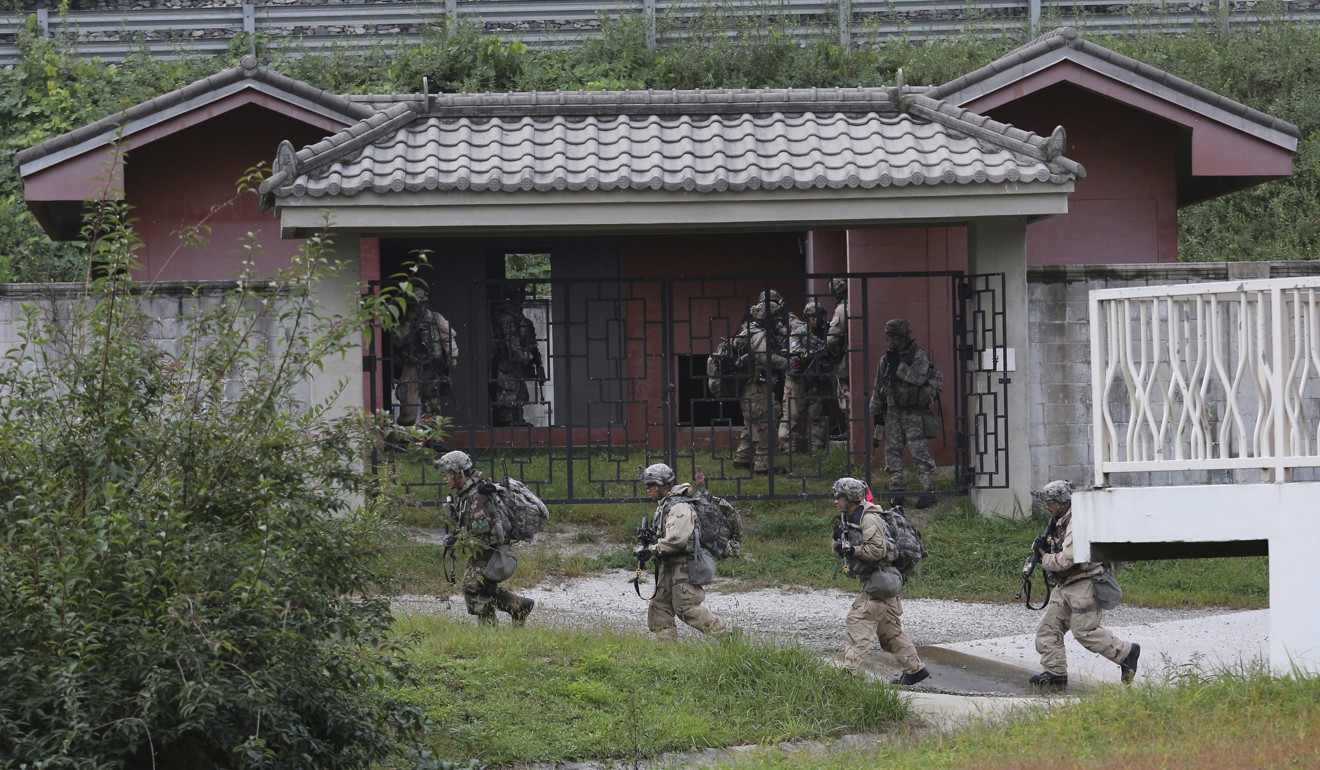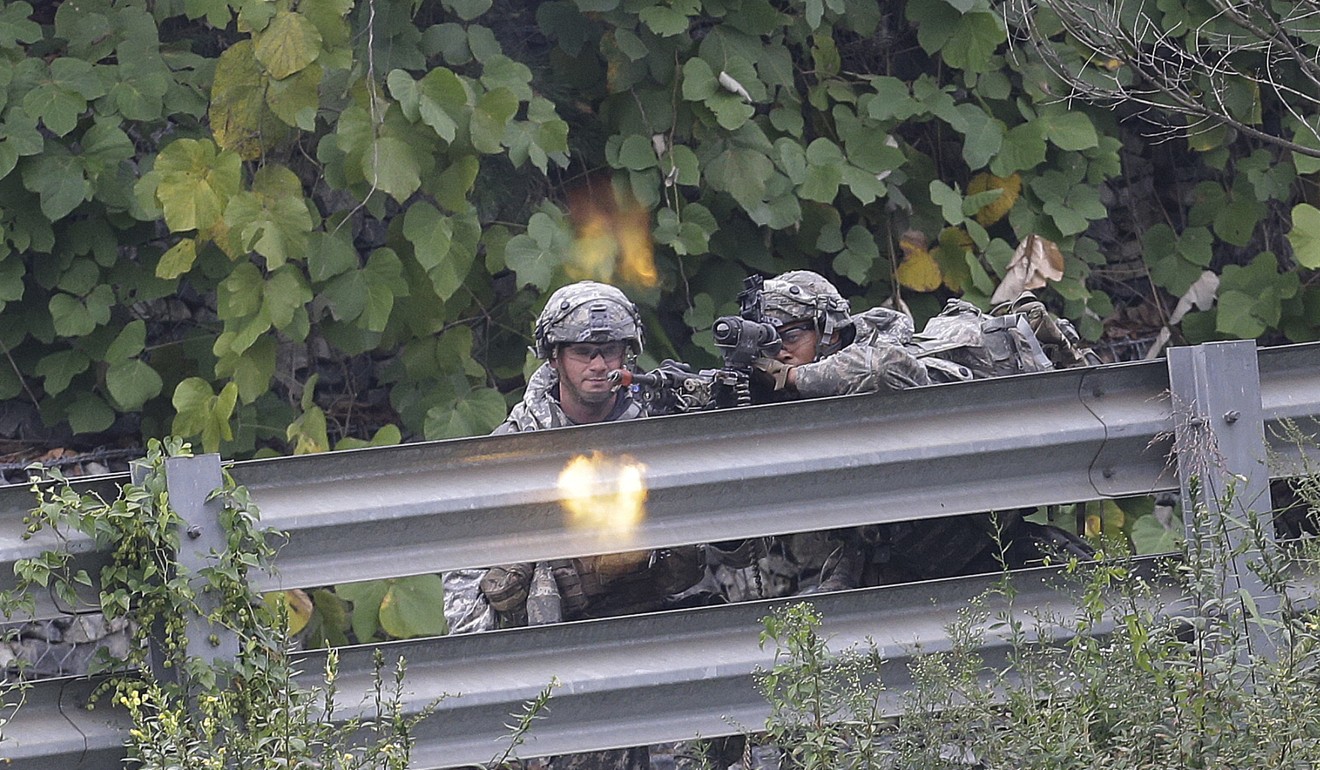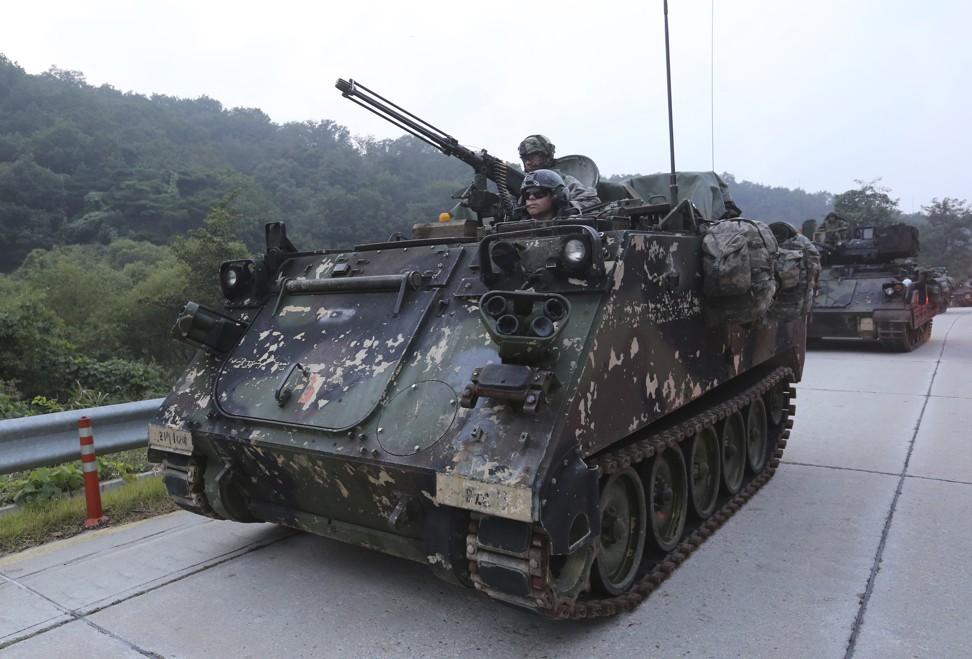
What military options are open to the US in tackling North Korea?
Donald Trump has threatened to ‘destroy’ the provocative nation, but how could that, or a less extreme goal, actually be achieved?
The United States has not been shy about threatening military action against North Korea.
As Pyongyang continues its march towards nuclearisation, US President Donald Trump has threatened to “totally destroy” the reclusive authoritarian regime with “fire and fury”, reiterating that “all options are on the table”. But he did not say how and when.
US Secretary of Defence James Mattis earlier threatened North Korea with a “massive military response” after the hermit nation conducted its sixth and most powerful nuclear test.
Neither Trump nor Mattis, however, have ever given specifics of what an attack might involve.
While the defence secretary has acknowledged that war with North Korea would be catastrophic in terms of human suffering – for North Koreans as well as neighbouring Japan and South Korea, both US allies – Washington has grown increasingly frustrated with Pyongyang’s intransigence in equipping itself with nuclear weapons.

Mattis told reporters earlier this week that the US had military options regarding North Korea that would not gravely endanger Seoul, including “kinetic” options, a euphemism for lethal military force.
But analysts such as Graham Ong-Webb, a research fellow at the S. Rajaratnam School of International Studies in Singapore, warned that no military options existed that would not result in a North Korean reprisal against South Korea.
So what are the military options open to Washington?
Increase regional military presence
The US could increase its military deployment in the region to serve as a greater deterrent against a North Korean assault. This option includes bolstering the defensive Terminal High Altitude Area Defence (THAAD) missile system in South Korea, strengthening the US military presence in South Korea and Japan, and supporting the re-introduction of nuclear weapons programmes to South Korea and Japan.
“[Washington] can put more pieces on the chessboard,” Ong-Webb said. “The purpose very specifically is deterrence.”
All of these moves would be seen by Pyongyang as provocation – the regime has previously objected to annual joint military exercises by South Korea and the US – but might not be effective or sustainable in halting its nuclear weapons programme, according to an essay written by Justin Bronk, a research fellow at the Royal United Services Institute in London.

Target Kim Jong-un directly
Although little is known about North Korea’s military capacity, another option the US has is to run covert operations or send special forces into the country to target Pyongyang’s decision-making centre – its supreme leader Kim Jong-un. If military forces were to take out Kim, it would destabilise the North Korean leadership and could force the nation to abandon its nuclear goals.
South Korea’s defence minister Han Min-koo said in January that Seoul was preparing a “special brigade” aimed at removing or paralysing North Korea’s wartime command structure.
But it is a risky approach given the numerous unpredictable factors in an assassination mission, including having to take on the heavy security Kim likely employs.

Target nuclear and missile facilities
The US no doubt wants to target North Korea’s military capability, particularly its fledgling nuclear weapons capability. Washington has the ability to conduct surgical strikes aimed at specific nuclear weapons or missile facilities with missiles or bombs.
This would be a complex task given the opacity surrounding North Korea’s military capabilities and the likelihood of counter-attacks and reprisals from Pyongyang. While the US may be able to destroy specific nuclear reactors or missile launchers, surgical strikes would not incapacitate North Korea’s military arsenal.

Make pre-emptive strikes
The US could strike first against Pyongyang through either conventional or nuclear warfare. But analysts have said this would inevitably lead to millions of deaths and massive destruction in and around North Korea, with the “unthinkable” possibility of a nuclear war and radioactive fallout.
Even if Washington were able to remove Pyongyang’s nuclear and missile arsenals, the North Korean regime could still prevail with its sizeable conventional artillery and land troops.
Retired admiral Dennis Blair, a former US Director of National Intelligence, told US political news website Politico that a pre-emptive strike was a possibility. However, he cautioned that: “The only options which would stand any chance of disarming North Korea of its nuclear capability in a short, quick and effective manner are very high-risk.”


